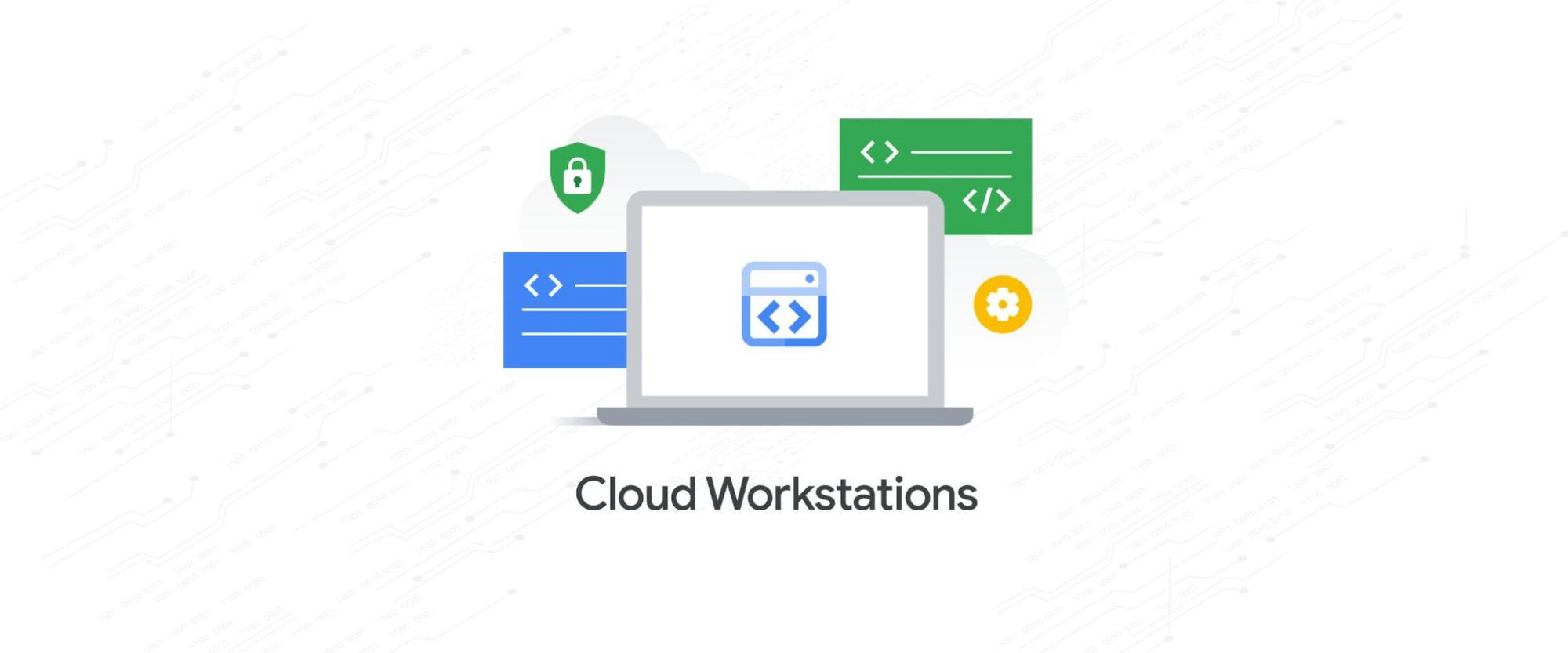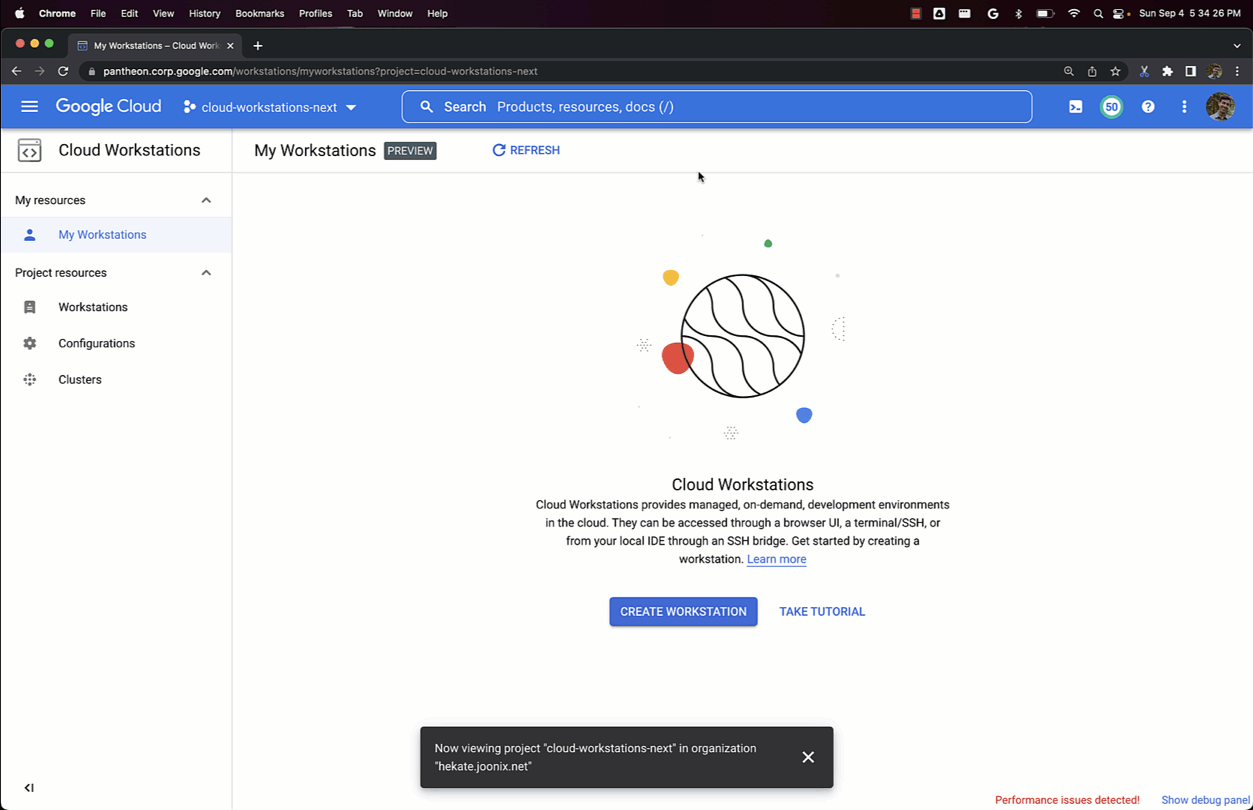Introducing Cloud Workstations: Managed and Secure Development environments in the cloud

Marcos Grappeggia
Senior Product Manager, Google Cloud
Nate Avery
Outbound Product Manager, Google Public Sector
With the unprecedented increase in remote collaboration over the last two years, development teams have had to find new ways to collaborate, driving increased demand for tools to address the productivity challenges of this new reality. This distributed way of working also introduces new security risks, such as data exfiltration — information leaving the company's boundaries. For development teams, this means protecting the source code and data that serves as intellectual property for many companies.
At Google Cloud Next, we introduced the public Preview of Cloud Workstations, which provides fully managed and integrated development environments on Google Cloud. Cloud Workstations is a solution focused on accelerating developer onboarding and increasing the productivity of developers’ daily workflows in a secure manner, and you can start using it today simply by visiting the Google Cloud console and configuring your first workstation.
Cloud Workstations: Just the facts
Cloud Workstations provides managed development environments with built-in security, developer flexibility, and support for many popular developer tools. Cloud Workstations addressing the needs of enterprise technology teams.
Developers can quickly access secure, fast, and customizable development environments anywhere, via a browser or from their local IDE. With Cloud Workstations, you can enforce consistent environment configurations, greatly reducing developer ramp-up time and addressing “works on my machine” problems.
Administrators can easily provision, scale, manage, and secure development environments for their developers, providing them access to services and resources that are private, self-hosted, on-prem, or even running in other clouds. Cloud Workstations makes it easy to scale development environments, and helps automate everyday tasks, enabling greater efficiency and security.


Cloud Workstations focuses on three core areas:
- Fast developer onboarding via consistent environments
- Customizable development environments
- Security controls and policy support
Fast developer onboarding via consistent environments
Getting developers started on a new project can take days or weeks, with much of that time spent setting up the development environment. The traditional model of local setup may also lead to configuration drift over time, resulting in “works on my machine” issues that erode developer productivity and stifle collaboration.
To address this, Cloud Workstations provides a fully managed solution for creating and managing development environments. Administrators or team leads can set up one or more workstation configurations as their teams’ environment templates. Updating or patching the environments of hundreds or thousands of developers is as simple as updating their workstation configuration and letting Cloud Workstations handle the updates.
Developers can create their own workstations by simply selecting among the configurations to which they were granted access, making it easy to ensure consistency. When developers start writing code, they can be certain that they are using the right version of their tools.
Customizable development environments
Developers use a variety of tools and processes optimized to their needs. We designed Cloud Workstations to be flexible when it comes to tool choice, enabling developers to use the tools they’re the most productive with, while enjoying the benefits of remote development. Here are some of the capabilities that enable this flexibility:
- Multi-IDE support: Developers use different IDEs for different tasks, and often customize them for their maximum efficiency. Cloud Workstations supports multiple managed IDEs such as IntelliJ IDEA Ultimate, PyCharm Professional, GoLand, WebStorm, Rider, Code-OSS, and many more. We’ve also partnered with JetBrains so that you can bring your existing licenses to Cloud Workstations. These IDEs are provided via optimized browser-based or local-client interfaces, avoiding the latency and challenges of general-purpose remote desktop tools such as latency and limited customization.


Container-based customization: Beyond IDEs, development environments also comprise libraries, IDE extensions, code samples, and even test databases and servers. To help ensure your developers are getting the tools they need quickly, you can extend the Cloud Workstations container images with the tools of your choice.
Support for third-party DevOps tools: Every organization has its own tried and tested tools — Google Cloud services such as Cloud Build, but also third-party tools such as GitLab, TeamCity, or Jenkins. By running Cloud Workstations inside your Virtual Private Cloud (VPC), you can connect to tools self-hosted in Google Cloud, on-prem, or even in other clouds.
Security controls and policy support
With Cloud Workstations, you can extend the same security policies and mechanisms you use for your production services in the cloud to your developer workstations. Here are some of the ways that Cloud Workstations helps to ensure the security of your development environments:
No source code or data is transferred or stored on local machines.
Each workstation runs on a single dedicated virtual machine, for increased isolation between development environments.
Identity and Access Management (IAM) policies are automatically applied, and follow the principle of least privilege, helping to limit workstation access to a single developer.
Workstations can be created directly inside your project and VPC, allowing you to help enforce policies like firewall rules or scheduled disk backups.
VPC Service Controls can be used to define a security perimeter around your workstations, constraining access to sensitive resources, and helping prevent data exfiltration.
Environments can be automatically updated after a session reaches a time limit, so that developers automatically get any updates in a timely manner.
Fully private ingress/egress is also supported, so that only users inside your private network can access your workstations.
What customers and partners are saying


"We have hundreds of developers all around the world that need to be able to be connected anytime, from any device. Cloud Workstations enabled us to replace our custom solution with a more secure, controlled and globally managed solution." — Sebastien Morand, Head of Data Engineering, L'Oréal


“With traditional full VDI solutions, you have to take care of the operating system and other factors which are separate from the developer experience. We are looking for a solution that solves problems without introducing new ones.” — Christian Gorke, Head of Cyber Center of Excellence, Commerzbank


“We are incredibly excited to tightly partner with Google Cloud around their Cloud Workstations initiative, that will make remote development with JetBrains IDEs available to Google Cloud users worldwide. We look forward to working together on making developers more productive with remote development while improving security and saving computation resources.” — Max Shafirov, CEO, JetBrains
Get started today
Try Cloud Workstations today by visiting your console, or learn more on our webpage, in our documentation or by watching this Cloud Next session. Cloud Workstations is a key part of our end-to-end Software Delivery Shield offering. To learn more about Software Delivery Shield, visit this webpage.



